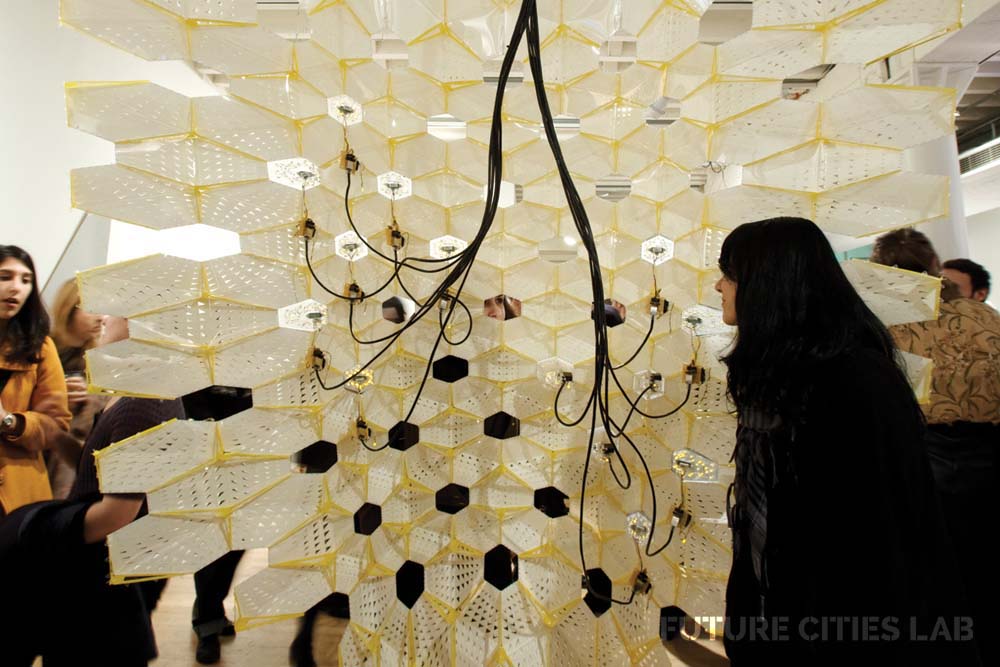
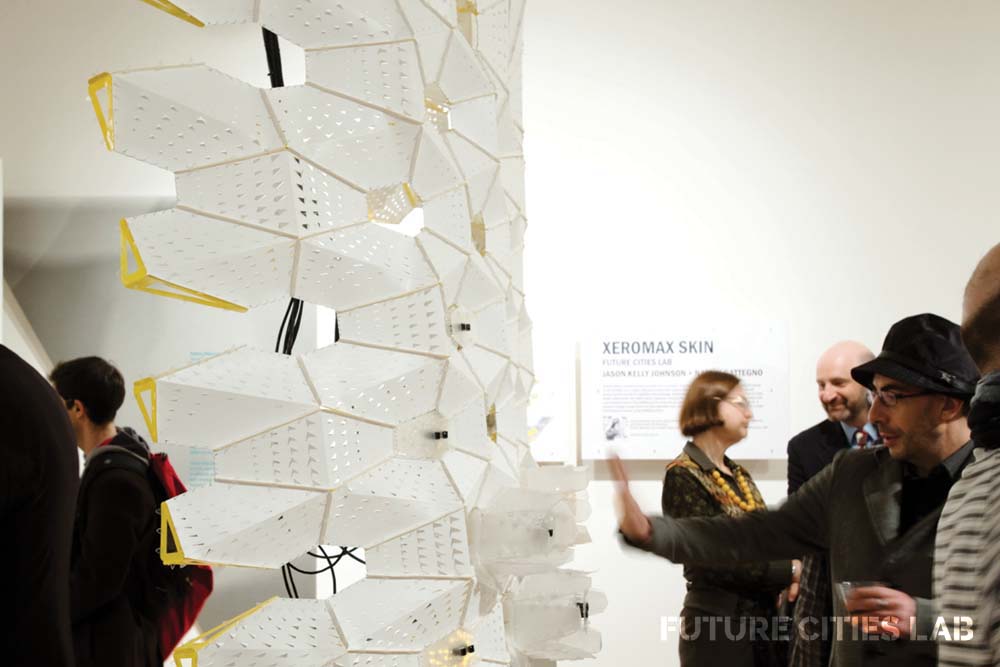

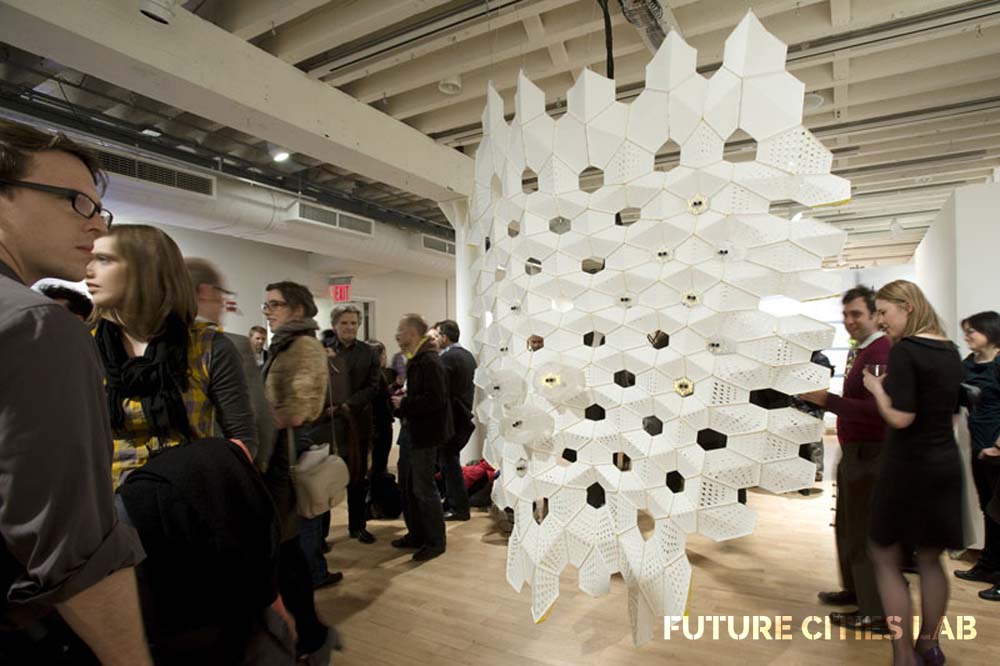

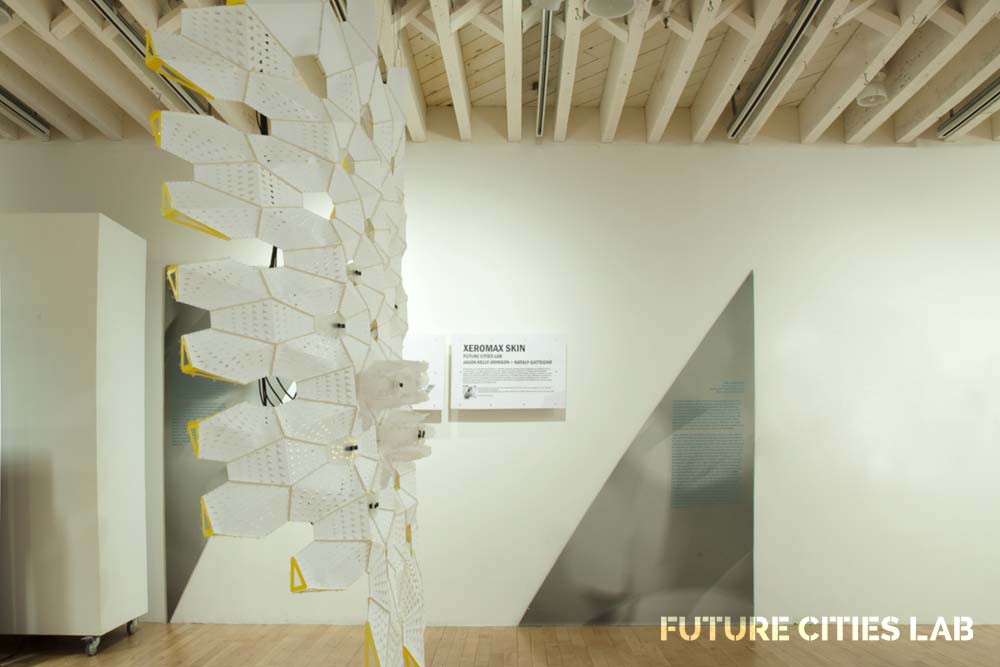
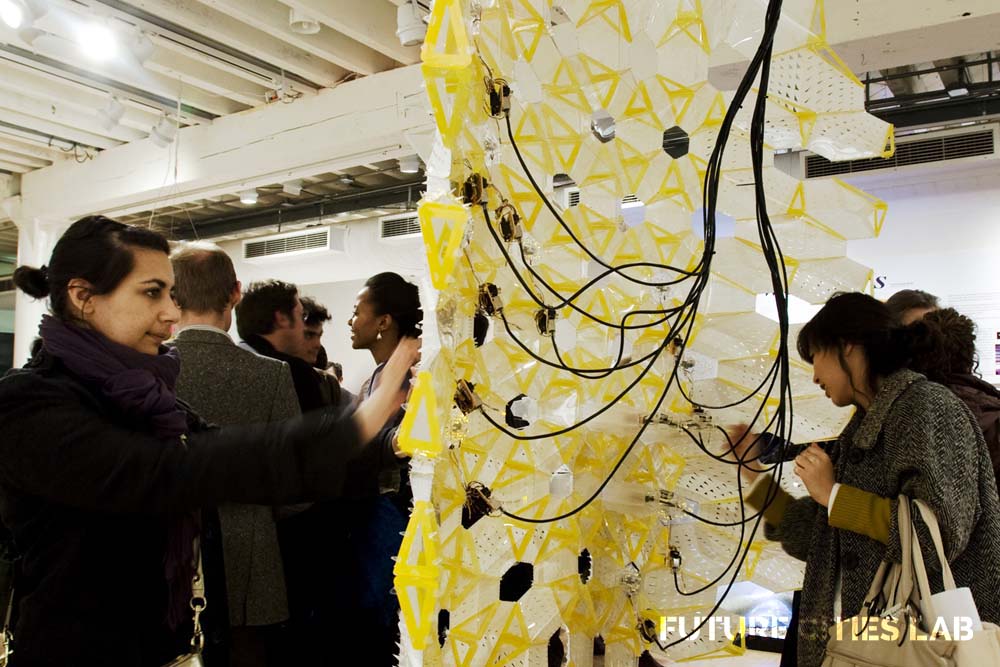
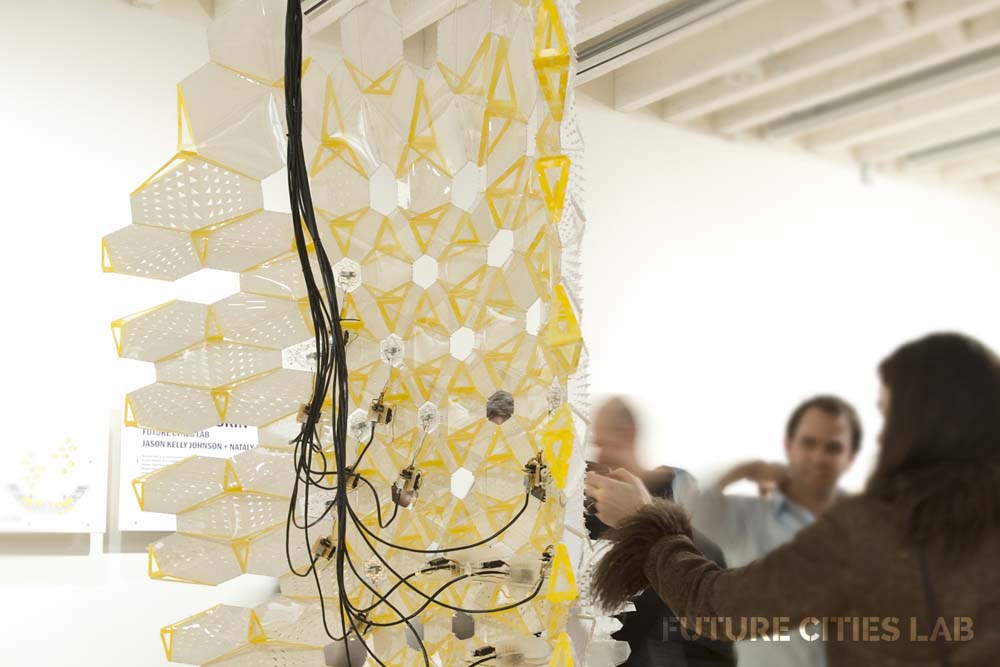
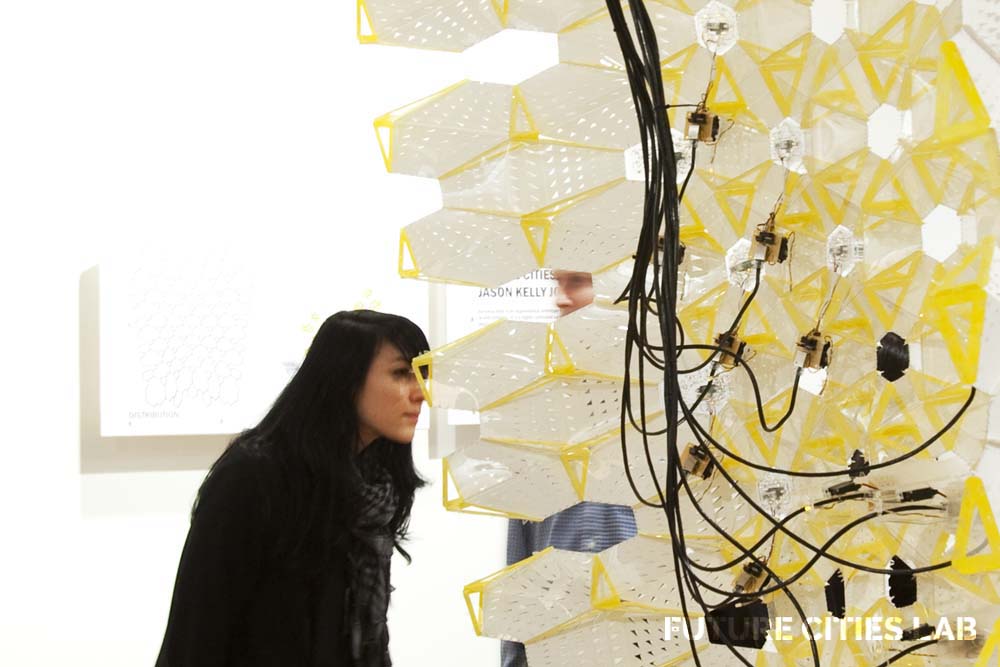
Xeromax Envelope
Xeromax Envelope is a quarter-scale experiment for a responsive building envelope calibrated and tuned to its environment. Part robotic structure, part experimental interface, and part microclimatic machine it registers energy cycles and interactions over time while harvesting solar energy and protecting the building from the local climate. Xeromax Envelope is proposed as a second-skin to an existing building and becomes a register of present and forecasted conditions. The model weaves ultra thin custom actuators, arrays of light and proximity sensors through the extent of the surface which transforms as it registers the changing conditions around it.
Location: Envelop{e}s Show, Pratt Manhattan Gallery, New York, NY
Project Team: Jon Acosta. Andrei Hakhovich, Diana Acosta, Wendy Ju, John Hobart Smith, Mark Campos, Michael Ageno, Anthony Diaz, Bo Wonkalasin, Ripon De Leon, Paul Fromm, Kezia OFiesh, Taylor Burgess.
Fabrication: MACHINIC Digital Fabrication & Consulting, San Francisco
Photographer: Zechariah Vincent
Curator: Christopher Hight.
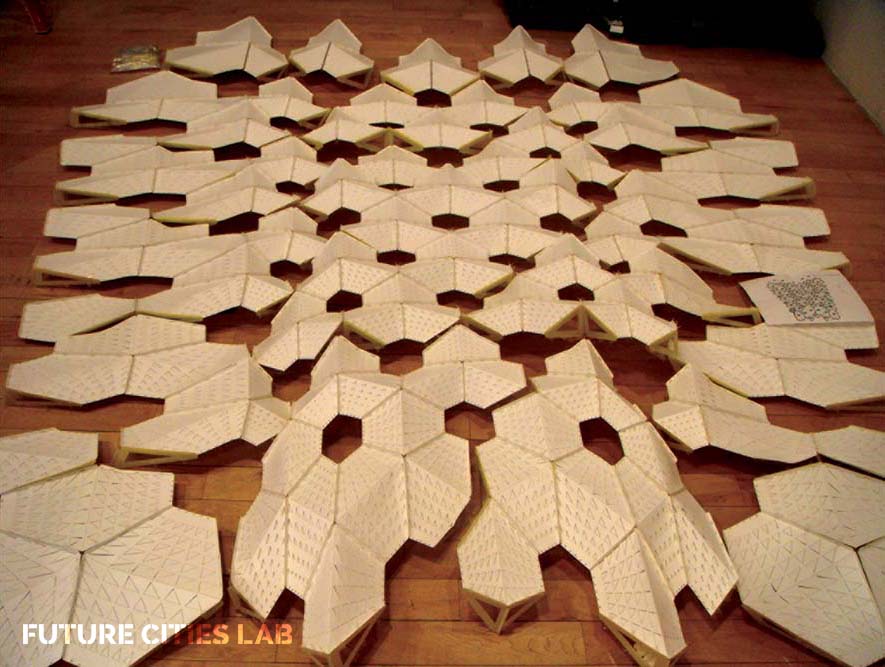
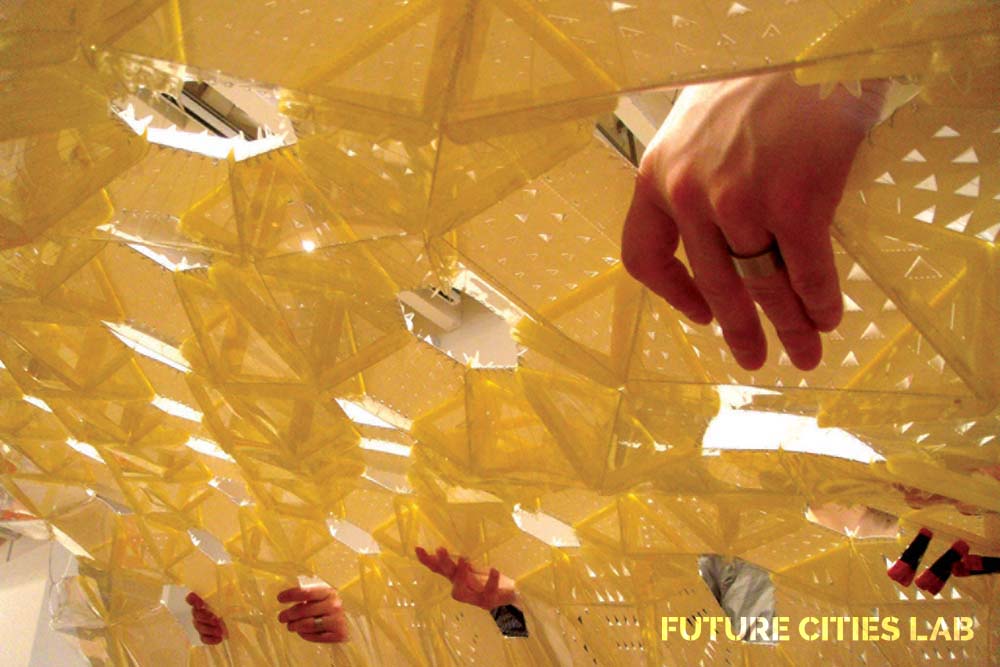

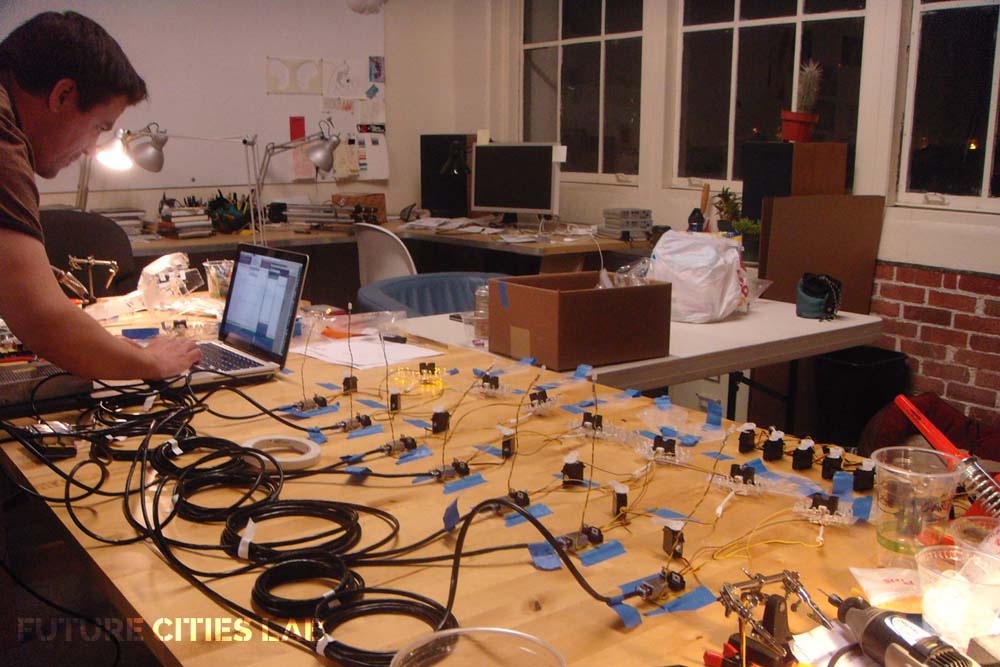
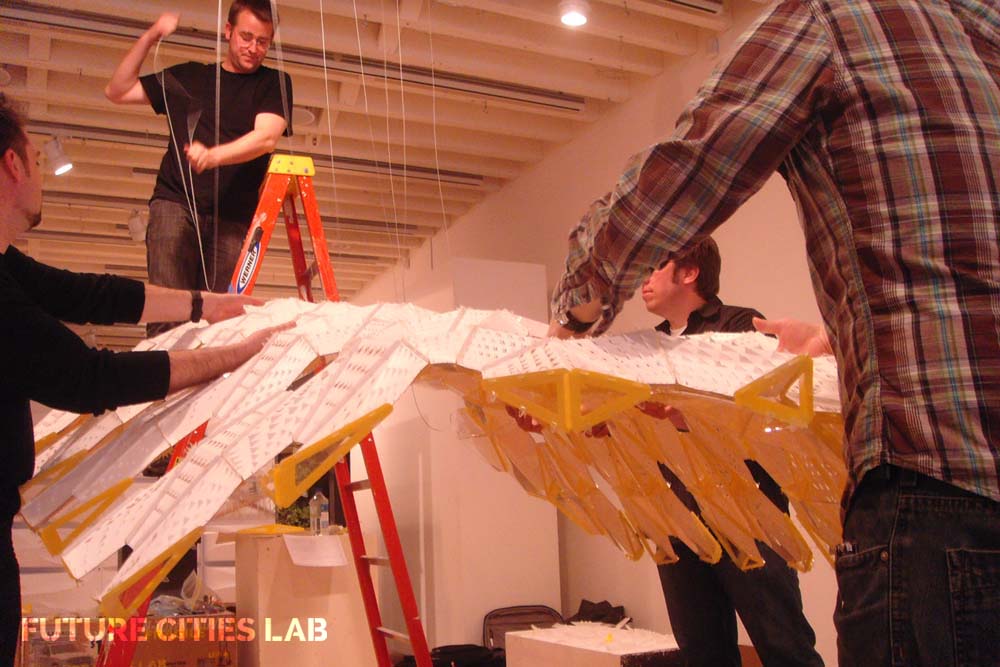
Curatorial Statement: “Envelop{e}s will explore new and sustainable potentials of the architectural surface in terms of the skin of a building and also as a sensorial space that envelops the body. “Envelopes” will feature full-scale, interactive models accompanied by architectural renderings in the form of drawings and computer animations, and documentation of the process of investigation into these models from eight international firms and designers."
Participating Architects: HouMinn Practice (Satterfield/Swackhamer); OCEAN Design Research (Michael Hensel); Future Cities Lab (Nataly Gattegno and Jason Kelly Johnson); Philippe Rahm; Servo (Marcelyn Gow, Ulrika Karlsson, and Chris Perry); Weathers (Sean Lally).
Commentary on FCL by curator Christopher Hight: "Future Cities Lab is an experimental design and research office based in San Francisco and led by principals Jason Kelly Johnson and Nataly Gattegno. Their work hotwires large scale urban organizations with intensive and responsive interfaces, examining how contemporary technology and social ordering no longer follows the divisions of scale and divisions of public and private that governed the industrial metropolis and out of which the modern typologies of spatial division and specialization of architecture precipitated. Today, the movement from the intimate sensorial envelopes of touch to the extensive envelope of vision no longer traces the gradient of private to public in the way it once did. Indeed, in an age of biotechnology, remote sensing, Facebook and recent Supreme Court rulings, what was once thought private is increasingly in the public domain even as public space has been utterly enfolded into the private extended body of corporate territory. Future Cities Lab’s contribution to this exhibit, XEROMAX is a quarter-scale experimental beta test for a responsive desert envelope that is calibrated, tuned, and responsive to its arid environment. Part robotic structure, part experimental interface, and part analytical drawing instrument, it registers energy cycles and interactions over time while harvesting light, wind and water to produce a habitual space without traditional walls and roofs. The model weaves ultra thin custom actuators , arrays of light and proximity sensors, with a customized interactive graphic display. During the course of the exhibit, its behaviors will change as it registers and catalogues the events and changing conditions around it. The configuration of the wall therefore becomes a register of the environmental history as well as the present conditions, feeding this information back into the realm of public imagination and discourse."
Copyright © 2012, Future Cities Lab. All rights reserved.

